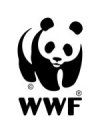Two new Wetlands of International Importance for Congo

Congo names two riverine Ramsar sites
The Secretatiat is pleased to announce that the Direction générale de l’Environnement in Brazzaville has designated two new Wetlands of International Importance in Congo, effective 3 April 2009. Les Rapides du Congo-Djoué (2,500 hectares, 04°19’S 015°11’E) comprises the important Congo River tributaries the Djoué and the Loua and a rich complex of surrounding wetland types. The very large Sangha-Nouabalé-Ndoki (1,525,000 hectares, 01°41’N 016°26’E),  which includes a National Park, comprises the important Sangha River and its surroundings. These two join Congo’s existing five Ramsar sites to provide commitments for the conservation and wise use of a total of 8,454,259 hectares. WWF International’s Freshwater Programme was extremely helpful in facilitating the work leading to the designation of these important new sites.
which includes a National Park, comprises the important Sangha River and its surroundings. These two join Congo’s existing five Ramsar sites to provide commitments for the conservation and wise use of a total of 8,454,259 hectares. WWF International’s Freshwater Programme was extremely helpful in facilitating the work leading to the designation of these important new sites.
Ramsar’s Assistant Advisor for Africa, Cynthia Kibata, has provided these brief site summaries based on the Ramsar Information Sheets that accompanied the designations.
Les Rapides du Congo-Djoué. 03/04/09; Brazzaville; 2,500 ha; 04°19’S 015°11’E. A complex comprising two of the principal tributaries of the River Congo, the Djoué and the Loua, permanent and temporary rivers, marshes, forested islands and aquaculture ponds. It is one of the rare zone of rapids on the Congolese side of the Congo River basin. The l’Île du Diable , one of three forested islands found within the site, provides refuge for a high concentration of birds that have escaped the ever-increasing human pressures that have led to the disappearance of several species. The waterways of the site support important populations of fish and other invertebrates as they serve as spawning grounds and part of the migration path along the River Congo. While the site is poor in endemic flora, it is known to sustain over 163 species of flora in 60 families. The site is a magnet for tourists due to its unique features, which create a spiritual and cultural attraction to the area – the main economic activities within the site, however, are market gardening, fishing, harvesting of wine palm oil, transport, and presence of a hydroelectric dam. While there is currently no management in place, there are national laws enforced for its protection.
Photos of the Les Rapides du Congo-Djoué Ramsar site (PDF)
Sangha-Nouabalé-Ndoki. 03/04/09; Sangha, Likouala; 1,525,000 ha; 01°41’N 016°26’E. National Park. Found in the northwest of Congo, the site is characterised by lakes, marshes, ponds, floodplain forests, swamps and the Sangha river, whose main tributary is the Ndoki. Various species of conservation concern are found here; flora from the family Fabaceae and Orchidaceae as well as fauna such as the Chimpanzee, Leopard and the Giant Pangolin amongst others. The site provides refuge for palearctic waterbirds such as Glareola pratincola as well as for the Nile Crocodile and fish such as Heterobranchus longifilis that take refuge as the extent of their aquatic habitat declines during the dry season. Apart from the resources provided by the site, it also plays an important role not only in the hydrological regulation of the Congo Basin but also in the socioeconomic development of the country. The Sangha is a communication route through which local communities can move their timber to Brazzaville. Agriculture, fishing, hunting, research, and extraction of sand and clay for construction are also practiced. At present there is a management plan in place only for the National Park, but a management plan will be elaborated for the entire site following the adoption of the National Policy on Wetlands.